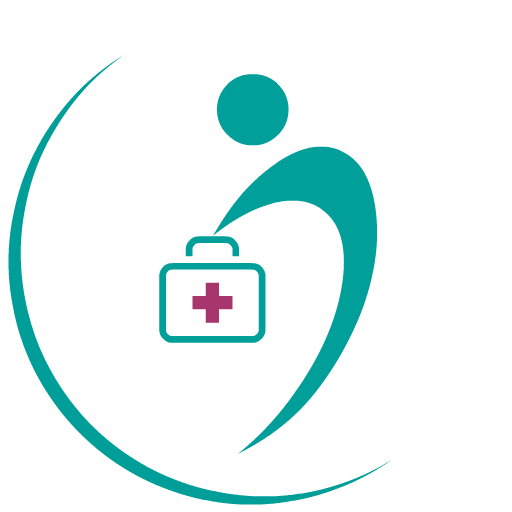You must have heard HIV as one of the most deadliest diseases. A disease with no cure.
What Is HIV?
HIV (human immunodeficiency virus) is a virus that attacks cells that help the body fight infection, making a person more vulnerable to other infections and diseases. It is spread by contact with certain bodily fluids of a person with HIV, most commonly during unprotected sex (sex without a condom or HIV medicine to prevent or treat HIV), or through sharing injection drug equipment.
If left untreated, HIV can lead to the disease AIDS (acquired immunodeficiency syndrome).
The human body can’t get rid of HIV and no effective HIV cure exists. So, once you have HIV, you have it for life.
Luckily, however, effective treatment with HIV medicine (called antiretroviral therapy or ART) is available. If taken as prescribed, HIV medicine can reduce the amount of HIV in the blood (also called the viral load) to a very low level. This is called viral suppression. If a person’s viral load is so low that a standard lab can’t detect it, this is called having an undetectable viral load. People with HIV who take HIV medicine as prescribed and get and keep an undetectable viral load can live long and healthy lives and will not transmit HIV to their HIV-negative partners through sex.
In addition, there are effective methods to prevent getting HIV through sex or drug use, including pre-exposure prophylaxis (PrEP), medicine people at risk for HIV take to prevent getting HIV from sex or injection drug use, and post-exposure prophylaxis (PEP), HIV medicine taken within 72 hours after a possible exposure to prevent the virus from taking hold.
What Is AIDS?
AIDS is the late stage of HIV infection that occurs when the body’s immune system is badly damaged because of the virus.
A person with HIV is considered to have progressed to AIDS when:
the number of their CD4 cells falls below 200 cells per cubic millimeter of blood (200 cells/mm3). (In someone with a healthy immune system, CD4 counts are between 500 and 1,600 cells/mm3.) OR
they develop one or more opportunistic infections regardless of their CD4 count.
Without HIV medicine, people with AIDS typically survive about 3 years. Once someone has a dangerous opportunistic illness, life expectancy without treatment falls to about 1 year. HIV medicine can still help people at this stage of HIV infection, and it can even be lifesaving. But people who start HIV medicine soon after they get HIV experience more benefits—that’s why HIV testing is so important.
How Is HIV Spread from Person to Person?
Having vaginal or anal sex with someone who has HIV without using a condom the right way every time or taking medicines to prevent or treat HIV. Anal sex is riskier than vaginal sex for HIV transmission.
Sharing injection drug equipment, such as needles, syringes, or other drug injection equipment (“works”) with someone who has HIV because these items may have blood in them, and blood can carry HIV. People who inject hormones, silicone, or steroids can also get or transmit HIV by sharing needles, syringes, or other injection equipment. Less common ways are:
An HIV-positive person transmitting HIV to their baby during pregnancy, birth, or breastfeeding. However, the use of HIV medicines and other strategies have helped lower the risk of perinatal transmission of HIV to less than 1% in the United States.
Being exposed to HIV through a needle stick or sharp injury. This is a risk mainly for health care workers. The risk is very low.
HIV is spread only in extremely rare cases by:
Having oral sex. Oral sex carries little to no risk for getting or transmitting HIV. Theoretically, it is possible if an HIV-positive man ejaculates in his partner’s mouth during oral sex. Factors that may increase the risk of transmitting HIV through oral sex are oral ulcers, bleeding gums, genital sores, and the presence of other sexually transmitted diseases (STDs), which may or may not be visible. However, the risk is still extremely low, and much lower than with anal or vaginal sex.
Receiving blood transfusions, blood products, or organ/tissue transplants that are contaminated with HIV. The risk is extremely small these days because of rigorous testing of the U.S. blood supply and donated organs and tissues. (And you can’t get HIV from donating blood. Blood collection procedures are highly regular and very safe.)
Being bitten by a person with HIV. Each of the very small number of documented cases has involved severe trauma with extensive tissue damage and the presence of blood. This rare transmission can occur through contact between broken skin, wounds, or mucous membranes and blood or body fluids from a person who has HIV. There is no risk of transmission if the skin is not broken. There are no documented cases of HIV being transmitted through spitting as HIV is not transmitted through saliva.
Deep, open-mouth kissing if both partners have sores or bleeding gums and blood from the HIV-positive partner gets into the bloodstream of the HIV-negative partner. HIV is not spread through saliva.
Eating food that has been pre-chewed by a person with HIV. The only known cases are among infants. HIV transmission can occur when the blood from an HIV-positive caregiver’s mouth mixes with food while chewing and an infant eats it. However, you can’t get HIV by consuming food handled by someone with HIV.
Does HIV Viral Load Affect Getting or Transmitting HIV?
Yes. Viral load is the amount of HIV in the blood of someone who has HIV. If taken as prescribed, HIV medicine (called antiretroviral therapy or ART) can reduce a person’s HIV viral load to a very low level, which keeps the immune system working and prevents illness. This is called viral suppression, defined as having less than 200 copies of HIV per milliliter of blood.
HIV medicine can also make the viral load so low that a standard lab test can’t detect it. This is called having an undetectable level viral load. Almost everyone who takes HIV medicine as prescribed can achieve an undetectable viral load, usually within 6 months after starting treatment.
HIV medicine is a powerful tool for preventing sexual transmission of HIV. But it works only if the HIV-positive partner gets and keeps an undetectable viral load. Not everyone taking HIV medicine has an undetectable viral load. To stay undetectable, people with HIV must take HIV medicine as prescribed and visit their health care provider regularly to get a viral load test.
How is HIV Not Spread?
HIV is not spread by:
Air or water
Mosquitoes, ticks, or other insects
Saliva, tears, sweat, feces, or urine that is not mixed with the blood of a person with HIV
Shaking hands; hugging; sharing toilets; sharing dishes, silverware, or drinking glasses; or engaging in closed-mouth or “social” kissing with a person with HIV
Drinking fountains
Other sexual activities that don’t involve the exchange of body fluids (for example, touching).
Donating blood
HIV can’t be passed through healthy, unbroken skin.
How Do You Get AIDS?
You can’t “catch” AIDS, which stands for acquired immunodeficiency syndrome.
AIDS is the most advanced stage of HIV infection. If a person has HIV and is not on HIV treatment, the virus will weaken the body’s immune system and the person will progress to AIDS.
People with AIDS have such badly damaged immune systems that they get a number of severe illnesses, called opportunistic infections.
What Are the Symptoms of HIV?
There are several symptoms of HIV. Not everyone will have the same symptoms. It depends on the person and what stage of the disease they are in.
Below are the three stages of HIV and some of the symptoms people may experience.
Stage 1: Acute HIV Infection
Within 2 to 4 weeks after infection with HIV, about two-thirds of people will have a flu-like illness. This is the body’s natural response to HIV infection.
Flu-like symptoms can include:
Fever
Chills
Rash
Night sweats
Muscle aches
Sore throat
Fatigue
Swollen lymph nodes
Mouth ulcers
These symptoms can last anywhere from a few days to several weeks. But some people do not have any symptoms at all during this early stage of HIV.
Don’t assume you have HIV just because you have any of these symptoms—they can be similar to those caused by other illnesses. But if you think you may have been exposed to HIV, get an HIV test.
Here’s what to do:
Find an HIV testing site near you—You can get an HIV test at your primary care provider’s office, your local health department, a health clinic, or many other places
Request an HIV test for recent infection—Most HIV tests detect antibodies (proteins your body makes as a reaction to HIV), not HIV itself. But it can take a few weeks after you have HIV for your body to produce these antibodies. There are other types of tests that can detect HIV infection sooner. Tell your doctor or clinic if you think you were recently exposed to HIV and ask if their tests can detect early infection.
Know your status—After you get tested, be sure to learn your test results. If you’re HIV-positive, see a health care provider as soon as possible so you can start treatment with HIV medicine. And be aware: when you are in the early stage of infection, you are at very high risk of transmitting HIV to others. It is important to take steps to reduce your risk of transmission. If you are HIV-negative, there are prevention tools like pre-exposure prophylaxis (PrEP) that can help you stay negative.
Stage 2: Clinical Latency
In this stage, the virus still multiplies, but at very low levels. People in this stage may not feel sick or have any symptoms. This stage is also called chronic HIV infection.
Without HIV treatment, people can stay in this stage for 10 or 15 years, but some move through this stage faster.
If you take HIV medicine exactly as prescribed and get and keep an undetectable viral load, you can live and long and healthy life and will not transmit HIV to your HIV-negative partners through sex.
But if your viral load is detectable, you can transmit HIV during this stage, even when you have no symptoms. It’s important to see your health care provider regularly to get your viral load checked.
Stage 3: AIDS
If you have HIV and you are not on HIV treatment, eventually the virus will weaken your body’s immune system and you will progress to AIDS (acquired immunodeficiency syndrome).
This is the late stage of HIV infection.
Symptoms of AIDS can include:
Rapid weight loss
Recurring fever or profuse night sweats
Extreme and unexplained tiredness
Prolonged swelling of the lymph glands in the armpits, groin, or neck
Diarrhea that lasts for more than a week
Sores of the mouth, anus, or genitals
Pneumonia
Red, brown, pink, or purplish blotches on or under the skin or inside the mouth, nose, or eyelids
Memory loss, depression, and other neurologic disorders
Each of these symptoms can also be related to other illnesses. The only way to know for sure if you have HIV is to get tested. If you are HIV-positive, a health care provider will diagnose if your HIV has progressed to stage 3 (AIDS) based on certain medical criteria.
Many of the severe symptoms and illnesses of HIV disease come from the opportunistic infections that occur because your body’s immune system has been damaged. See your health care provider if you are experiencing any of these symptoms.
Blogs
Stay connected to health experts and read what they have to say via DocSmart.
Please sign up to create your own blog





